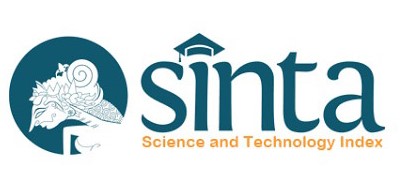Management Anesthesia of Esophagostomy in a Patient with a Double Outlet Right Ventricle
Abstract
Background: Esophageal atresia is a congenital disorder in which there is no esophagus because the proximal and distal esophagus is not connected. Babies with esophageal atresia can show several symptoms: foamy mouth, cyanosis, coughing and tightness, flatulence, oliguria, or worse, pneumonia symptoms. Accompanying anomalies occur in greater than 50% of neonates with esophageal atresia. Esophageal atresia is identified by ultrasound at 18 weeks of gestation, ultrasound, and Magnetic resonance imaging (MRI) of the fetal neck, or examination of a nasogastric tube in the neck of a newborn. The management of esophageal atresia is challenging. The main choice remains the surgical procedure, which usually involves making a stoma on the proximal esophagus and gastrostomy. However, surgery has risky complications.
Case: In this case, it was reported that a 22-day-old baby with tracheoesophageal fistula (TEF) type C with Ventricular Septum Defect and Atrial Septum Defect and Double Outlet Right Ventricle (DORV) underwent esophagostomy surgery with general anesthesia.
Conclusion: Anesthesia management with general anesthesia, intubation using intravenous ketamine 3 mg, fentanyl 3µg, atracurium 1.5 mg gives stability for esophagostomy in a patient with a double outlet right ventricle.
Keywords
Full Text:
PDFReferences
van Lennep M, Singendonk MMJ, Dall’Oglio L, et al. Oesophageal atresia. Nat Rev Dis Prim. 2019;5(1). doi:10.1038/s41572-019-0077-0
Salik I, Paul M. Tracheoesophageal Fistula. Treasure Island (FL): StatPearls Publishing; 2021. https://www.ncbi.nlm.nih.gov/books/NBK535376/.
Wilkinson JL. Double outlet right ventricle: Surgical strategies and outcome: Fontan versus biventricular repair. Asia Pacific Hear J. 1998;7(1):60-61. doi:10.1016/s1328-0163(98)90083-5
Choinitzki V, Zwink N, Bartels E, et al. Second study on the recurrence risk of isolated esophageal atresia with or without trachea-esophageal fistula among first-degree relatives: No evidence for increased risk of recurrence of EA/TEF or for malformations of the VATER/VACTERL association spectrum. Birth Defects Res Part A - Clin Mol Teratol. 2013;97(12):786-791. doi:10.1002/bdra.23205
Nishi E, Takamizawa S, Iio K, et al. Surgical intervention for esophageal atresia in patients with trisomy 18. Am J Med Genet Part A. 2014;164(2):324-330. doi:10.1002/ajmg.a.36294
Sidiq MA, Yupono K. Manajemen Anestesi Torakotomi Ligasi Fistel Pasien Tracheoesophageal Fistle Tipe C dengan Atrial Septal Defect (ASD) Sinus Venosus Besar dan Patent Ductus Arteriosus (PDA). J Anaesth Pain. 2021;2(1):25-31. doi:10.21776/ub.jap.2021.002.01.03
Sudjud R, Bisri T, Boom CE. Anesthetic Consideration on Neonatal Patient with Esophageal Atresia. Open J Anesthesiol. 2016;06(09):128-136. doi:10.4236/ojanes.2016.69022
Sigmon D, Eovaldi B, Cohen H. Duodenal Atresia And Stenosis. Treasure Island: StatPearls Publishing; 2020. https://www.ncbi.nlm.nih.gov/books/NBK470548/
Yefet E, Daniel-Spiegel E. Outcomes from polyhydramnios with normal ultrasound. Pediatrics. 2016;137(2). doi:10.1542/peds.2015-1948
Osei-Nketiah S, Appeadu-Mensah W. Oesophageal Atresia: Drowning a Child in His/Her Own Saliva, Pediatric Surgery. In: Flowcharts and Clinical Algorithms. IntechOpen; 2019.
Höllwarth ME, Till H. Esophageal Atresia. In: Puri P, ed. Pediatric Surgery: General Principles and Newborn Surgery. Berlin, Heidelberg: Springer Berlin Heidelberg; 2020:661-680. doi:10.1007/978-3-662-43588-5_48
Yim D, Dragulescu A, Ide H, et al. Essential Modifiers of Double Outlet Right Ventricle: Revisit with Endocardial Surface Images and 3-Dimensional Print Models. Circ Cardiovasc Imaging. 2018;11(3):1-9. doi:10.1161/CIRCIMAGING.117.006891
Verma B, Abhinay A, Singh A, Kumar M. Double outlet right ventricle and aortopulmonary window in a neonate with Bohring-Opitz (Oberklaid-Danks) syndrome: First case report. J Fam Med Prim Care. 2019;8(3):1279-1281. doi:10.4103/jfmpc.jfmpc_74_19
Mirzarahimi M, Saadati H, Doustkami H. Heart Murmur in Neonates : How Often Is It Caused by Congenital Heart Disease ? 2011;21(1):103-106.
Brown JW, Ruzmetov M, Okada Y, Vijay P, Turrentine MW. Surgical results in patients with double outlet right ventricle: A 20-year experience. Ann Thorac Surg. 2001;72(5):1630-1635. doi:10.1016/S0003-4975(01)03079-X
Wyman W, Lai LL, Mertens MS, Cohen TG. Chocardiography in Pediatric and Congenital Heart Disease: From Fetus to Adult. 2nd edition. United Kingdom: Wiley-Blackwell; 2016. 527-529.
American Association of Nurse Anesthesist. Airway Management: Use of Succinylcholine or Rocuronium. Illinois; 2016.
Butterworth IV JF, Mackey DC, Wasnick JD. Morgan & Mikhail’s Clinical Anesthesiology. 5th ed. United States: McGraw-Hill Companies; 2013. 297-301.
Flood P, Rathmell JP, Shafer S. Sympathomimetic Drugs. In: Stoelting’s Pharmacology and Physiology in Anesthetic Practice. 5 ed. United State of America: Wolters Kluwer Health; 2015:450.
Roberta LH, Marschall KE. Congenital Heart Disease. In: Stoelting’s Anesthesia and Co-Existing Disease. 7th ed. Philadelpia: Elsevier; 2017:145.
DOI: http://dx.doi.org/10.21776/ub.jap.2021.002.02.06
Refbacks
- There are currently no refbacks.

This work is licensed under a Creative Commons Attribution 4.0 International License.









.png)

